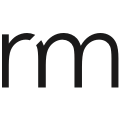The Problem
LendingTree’s current user experience primarily focused on receiving monthly credit updates. This meant that users did not have any incentive to come back to LendingTree aside from receiving their free credit update or to get a new line of credit. LendingTree’s logged in experience needed to scale to better engage its large user base on a more regular basis (daily/weekly).
The Process
This first step of the redesign process to find the most intuitive way to organize current pages and features within the platform. The current navigation had been expended to the point where further additions were not plausible in a full window desktop display. Below are some of the results from user research inquiries, which primarily focused on a hybrid card sort exercise with over 50 participants.
After reviewing the data points, it became clear that users grouped similar items into 5 different section: Dashboard, My Credit, Products & Services, Learning Center, and Support. The next step was to figure out how we could expand the current platform to encourage active engagement from LendingTree’s user base. After many discussions, the idea of displaying a user’s “financial journey” was proposed. What made this challenging is that everyone defined their financial journey differently depending on many personal factors. More user testing was needed to determine what types of items user’s would find useful when it came to other aspects of their finances. Several rounds of user testing of specific widgets and ideas were conducted.
After collecting the data from our user tests, there appeared to be certain areas users gravitated towards. Widgets that showed a user’s current financial status (such as Assets and Credit Score) ranked at the top while comparison widgets (such as the Comparison and Goals widgets) ranked closer to the bottom. After some initial reviews of this data, we wanted to bring forth the idea of having the decided information hierarchy while showing users as much financial information as possible. Some initial dashboard designs were created that showcased Assets, Debt, Savings, and Credit Score all in one section.
Upon further review of these designs, there was a glaring issue when it came to data and visual understanding. Certain factors like assets, savings, and credit score always wanted to be grown while debt always wanted to be decreased. The team then started to ponder if there was a way for us to make all of these things to be “increasing”. After several brainstorming meetings, we started to gravitate towards an idea of “financial wellness”. A user within LendingTree always has to have a credit score but their finances also consist of current income and spending habits (Available Income) as well as their saving habits towards retirement (Wealth). These 3 factors could then make up a user’s “financial wellness” and allow us to inform them how they are doing on their overall financial journey. The below designs showcase each of these brainstormed areas.
The Solution
The final designs that were implemented were not far off from these original designs. The Available Income area was changed to Cash Flow to represent a longer period of time (a month) and to avoid the possibility of showing users with negative cash flows, especially at the beginning of each month. Likewise, Wealth was changed to Financial Future so we could highlight a user’s savings and investments without feeling the need to compare them against their current debt. The MyLT Redesign was released in late 2019 with Cash Flow and Financial Future sections being added to the dashboard as well as improvements to the overall UI and layout of the platform pages. The recommended architecture was descoped from the initial release and will be implemented at a later date. Some of the final designs can be seen below.
Since release, the new version has been A/B tested against its previous counterpart. As of Q2 of 2020, Revenue Per Visit had increase by 7% while Loan Leads Per Visit had increased by about 3%. We also found that users came back with slightly more regularity and spent about 40% more time on the site compared to the old design. While some of these metrics are not huge swings, it did tell us that the new design performed equal to (if not better) than the previous design while also allowing us the ability to start collecting more financial data relating to a user (income, savings, etc.). The expansion of opportunity areas within the platform without impacting LendingTree’s bottom line was a huge win for the product and design team.
